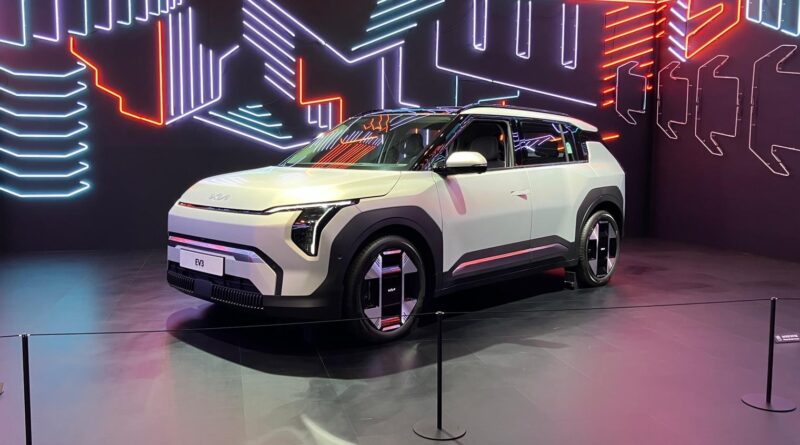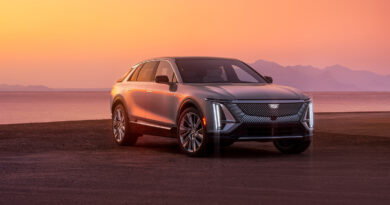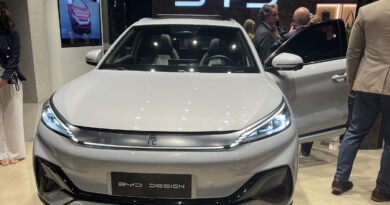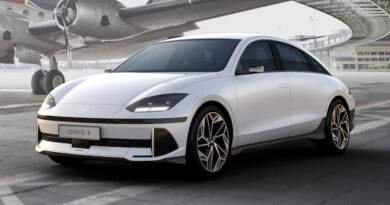Motor show report: everything mad and electric from Korea’s 2024 Busan Mobility Show
The car show is dead – long live the ‘mobility’ show.
It’s a deeply unsexy name, but that’s what electrification has done.
Being just a ‘car’ company won’t cut it today. You must be a ‘mobility solution provider’. Yep, marketing suits have won.
EVs, seemingly, have also triumphed. At this month’s Busan Mobility Show on Korea’s south coast, anything petrol or diesel powered was basically asked to hide outside. In disgrace.
Busan’s a small show with heavy emphasis on domestic market products. Kia’s and Hyundai’s stands battled for supremacy, closely followed by Genesis. But strangely, not a peep from Korea’s own SsangYong.
BMW Group Korea was the only imported brand attending, while Renault Korea featured the locally built, Korean-market only (for now) Grand Koleos hybrid SUV.
After a day poking around the show, these were our highlights.
Hyundai Inster

Show highlight was the unveil of Hyundai’s Inster, its new global electric city SUV.
Badged Casper in Korea (a combustion version already exists there), but will be EV only when it lands in Australia early next year, highly likely priced below $40,000 to rival Chinese offerings.
Surprisingly spacious inside, cute styling, acceptable range of 305km from its 42kWh battery (a 355km range 49kWh version’s also confirmed for us), V2L and solid included kit all help Inster’s cause.
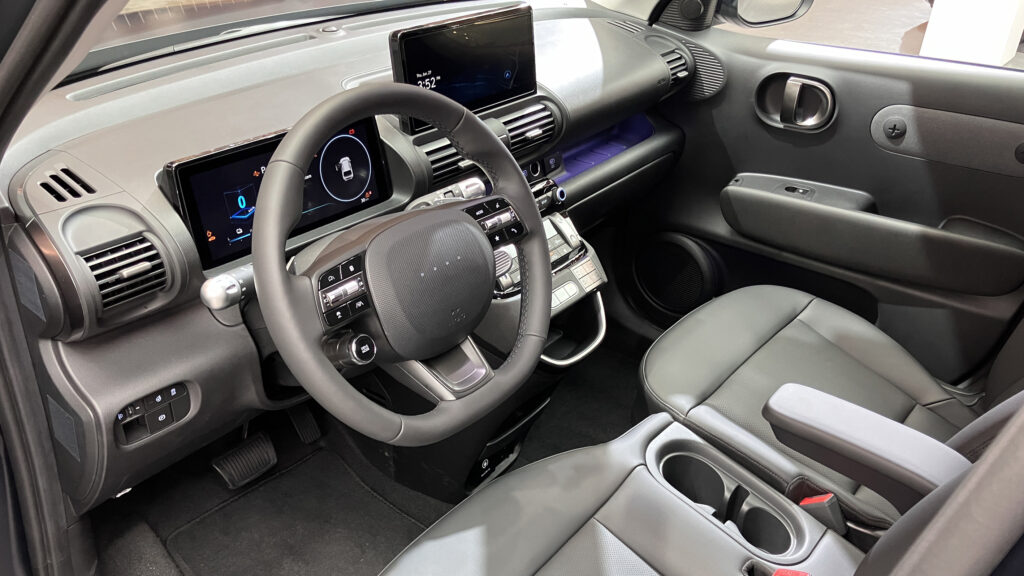
Fun colours suit the remit, including khaki, orange and buttercream yellow pearl.
Kia EV3

Massively important car for Australia, and this was a great opportunity to prod around Kia’s new small electric SUV, which looks every inch a baby EV9.
Arriving here in 2025 for around $50k, it’s about Kia Seltos in size, but the use of interior space is impressive indeed. It’s properly roomy, and may well suffice for those who’d otherwise hop into the larger (and imminent) Kia EV5.
A near-30-inch screen combines a driver display and infotainment, and feels crisp and fast to operate.

Range is up to 600km with the larger 81kWh battery, while single motor power is 150kW/283Nm; but we’re promised a hot twin-motor GT version in future.
If Kia can price an entry-level EV3 around the $45K mark, it’ll be a damn popular family SUV.
Kia Tasman ute
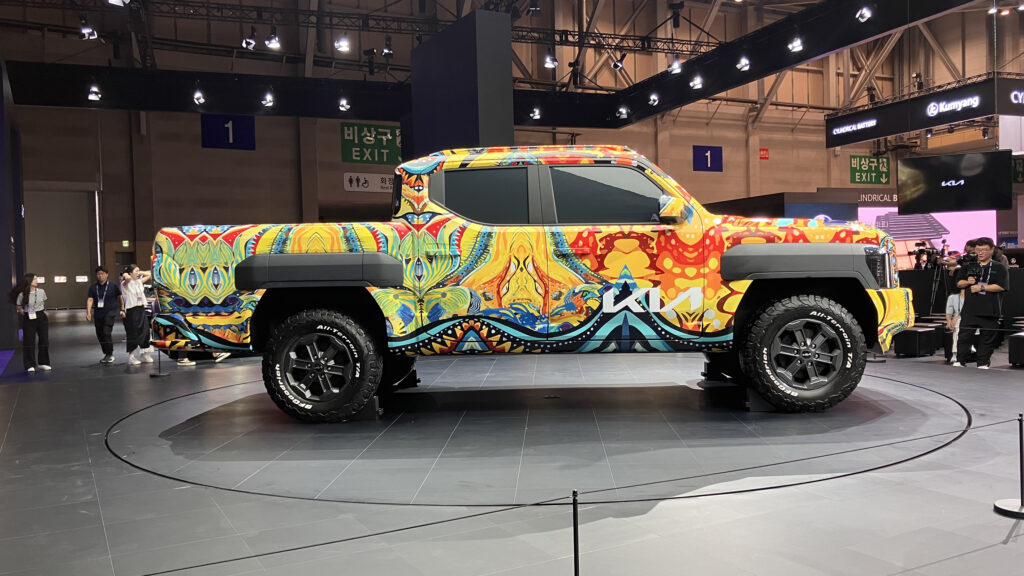
Coated in camo, fenced off and with orders for we spectators to stand well back, nevertheless the Tasman looks a compelling new alternative player in our crowded pickup segment.
The dual-cab will likely feature a 2.2-litre turbo-diesel engine from launch, and is set to hit Australia in 2025. But we’re more interested in the planned electric version, due in 2026.
Hyundai / Supernal S-A2 flying taxi
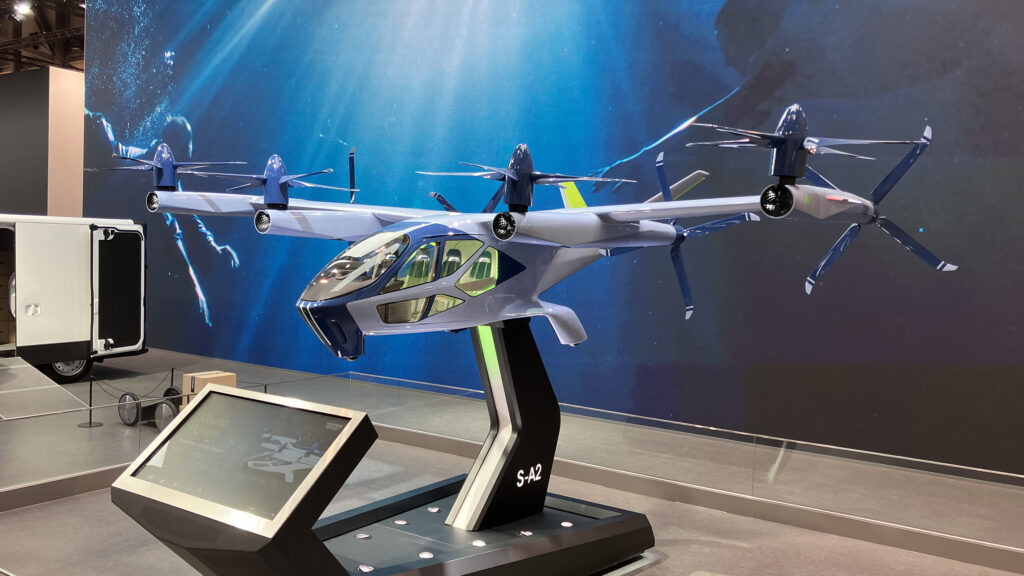
No full-size e-VTOL (electrical vertical take-off and landing) on show, but a large scale model and President of Hyundai Motor Group Jaiwon Shin’s positive words suggest they’re on track for electric flying taxis by 2028.
These giant drones have space for four passengers plus a pilot, cruise at 200km/h at an altitude between 300 to 500 metres, and we’re assured they don’t sound like buzzing, nightmarish drones.
Looks like a fancy helicopter cabin inside, but challenges include airspace regulations, security risks, public acceptance, take-off and landing docks… and other brands being well ahead. US startup Joby Aviation’s apparently launching air taxi services in Dubai by early 2026.
Genesis X Gran Racer VGT Concept
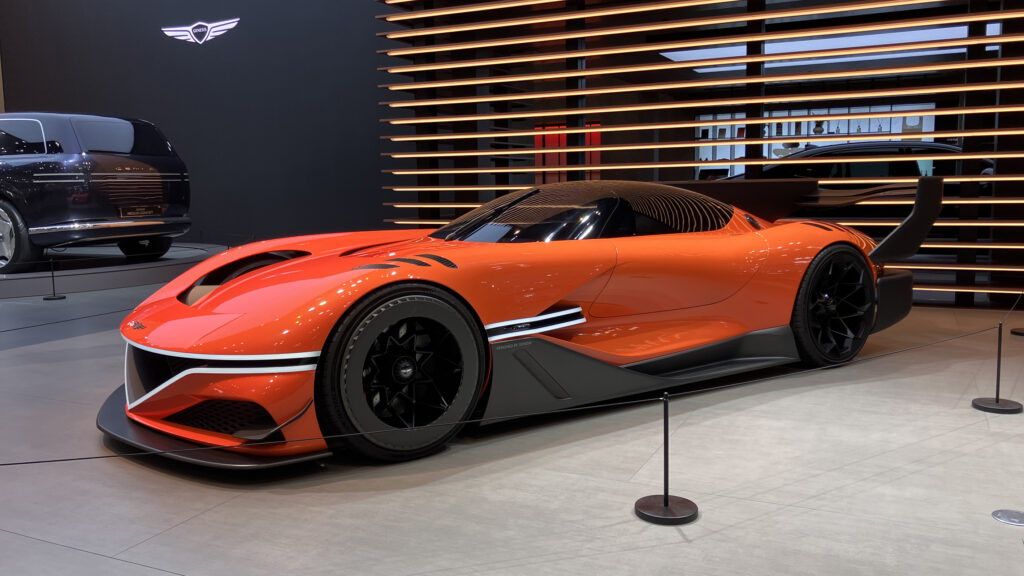
Genesis just got damn sexy.
The brand’s Magma range – like AMG for Mercedes or M for BMW – was disappointingly absent – the GV60 Magma and G80 EV Magma concepts are currently on show at Goodwood, UK.
We were left with a less real-world substitute in the VGT Concept, a hypercar for the Gran Turismo video game franchise. Not that we’re grumbling.
Looking like a Le Mans 24 Hour hypercar entrant with its race cockpit and giant carbon fibre aero and road-sucking height, power comes from a V6 hybrid powertrain delivering 1148kW and 1425Nm (about twice as much as a Ferrari V12), while screaming to 10,000rpm.
Will it spawn a production hypercar? Good God let’s hope so.
Genesis Electrified G80 facelift
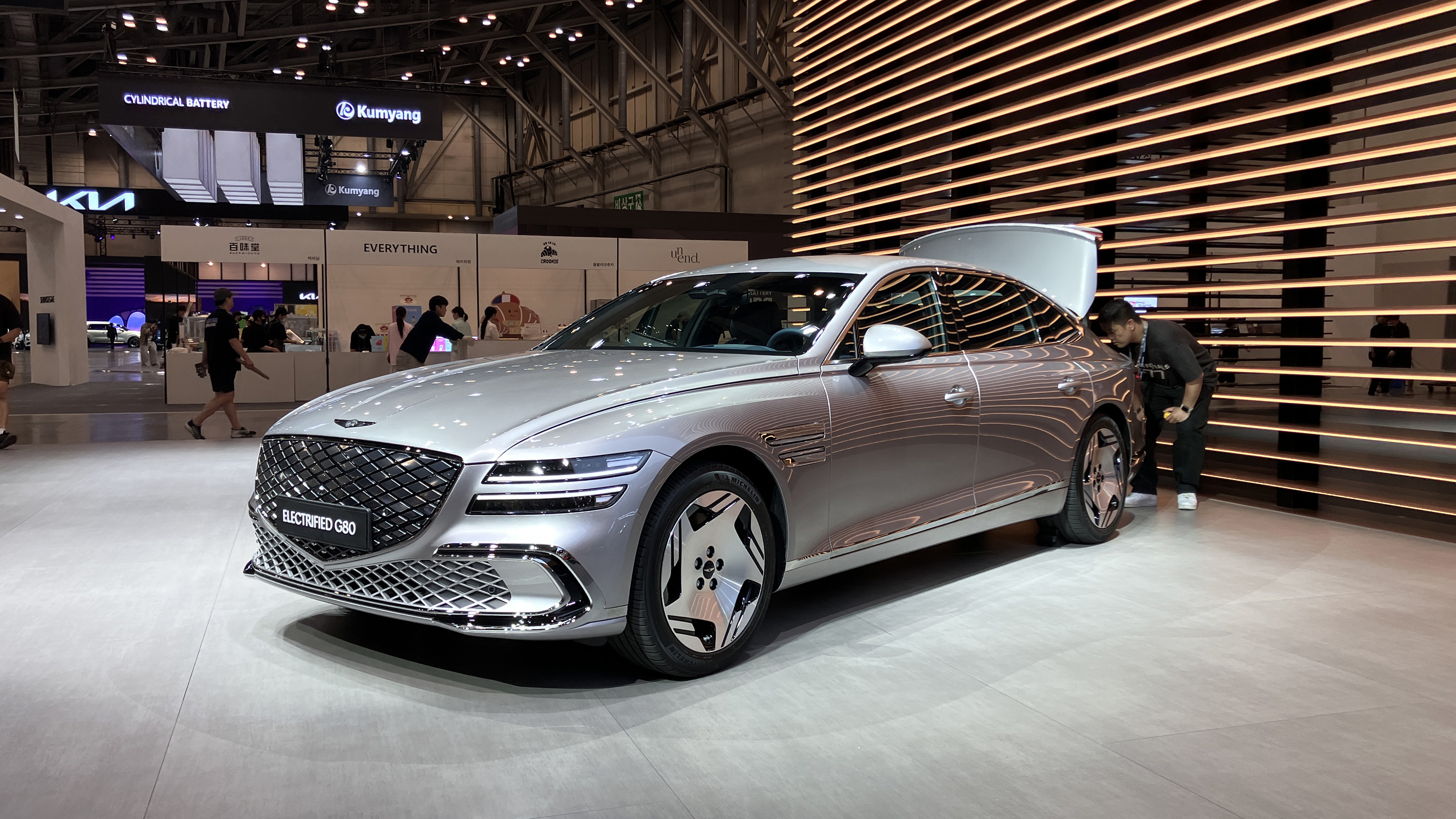
Flagship G80 EV gets a 130mm wheelbase extension, there to “meet customer demands on spacious rear space,” we were told.
Peering inside, rear travel is especially salubrious, with two business class reclining chairs in pleated leather, central armrest control and pair of screens running streaming services.
Changes are hardly groundbreaking – it remains a striking big limo – but welcome updates include a new grille, bumper and lights, plus new and very imposing aero-honed alloys.
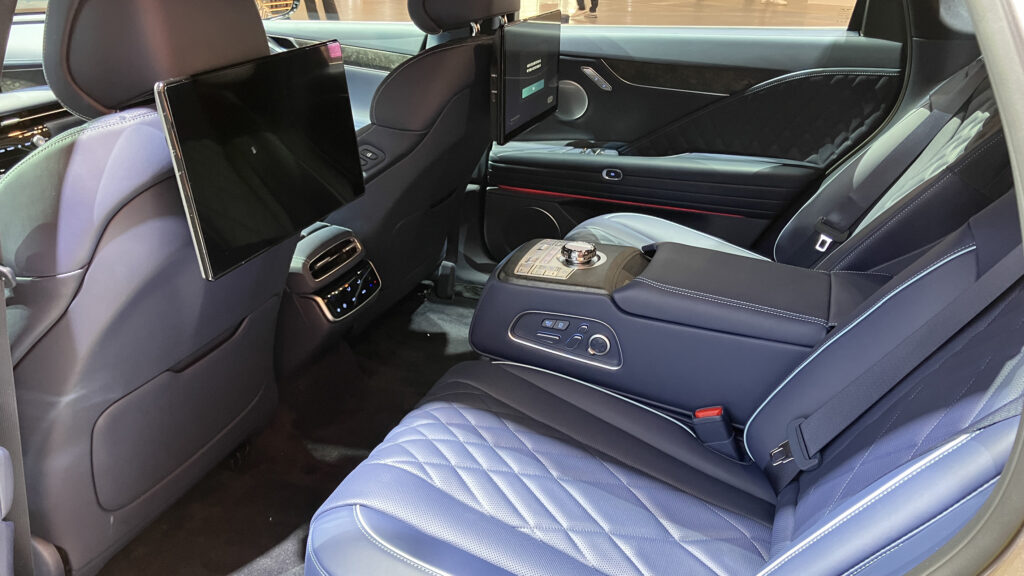
There’s now rear wheel steering to help manoeuvre this big barge, a larger (95.4kWh) battery to up range from about 520km to almost 600km (WLTP), and we believe an unchanged 272kW/700Nm twin electric motor setup.
Genesis Neolun Concept
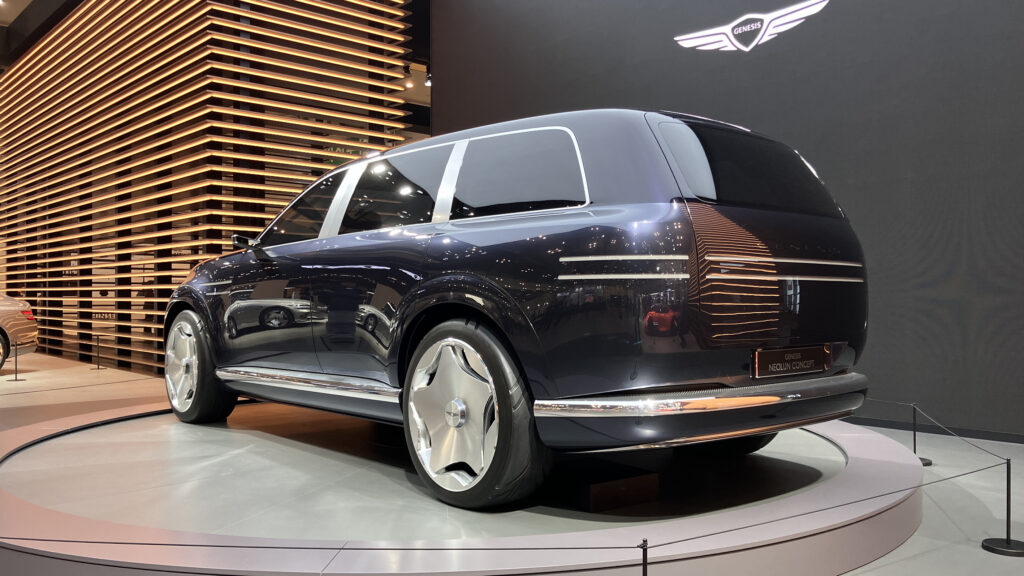
Previews the new flagship (and currently unconfirmed) Genesis GV90 electric SUV, to rival the BMW iX and Mercedes EQS SUV.
Gorgeous curvaceous styling clashed with a pimp-like purple interior, but the luxe is otherworldly. Full details are found in our story here.

Kudos for electric-opening suicide doors that will hopefully make it to the production model.
Hyundai ST1 electric van
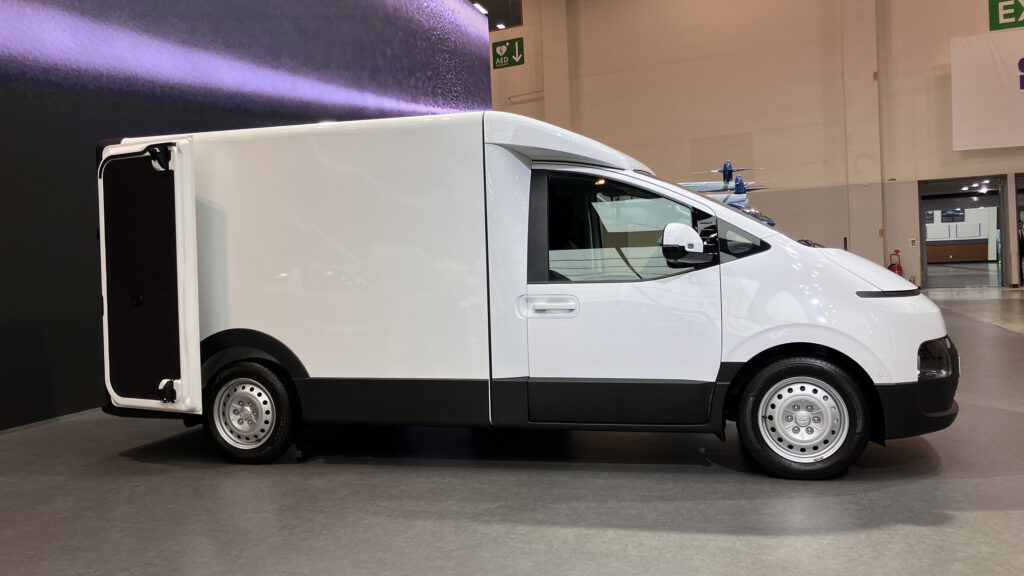
Easily recognisable as the Staria Load diesel commercial van already sold in Australia, but this ST1 is a full electric version with 160kW/350Nm electric motor, 76kWh battery and range between 300-400km depending on configuration.
A Hyundai Australia spokesman told EVCentral it was Korean market only for now, but would go into consideration for us should the opportunity arise.
Australia’s electric medium van segment is expanding apace, with the Ford E-Transit, Mercedes Benz eVito and LDV eDeliver7 all here, and the Peugeot E-Expert imminent.
BMW Vision Neue Klasse Concept
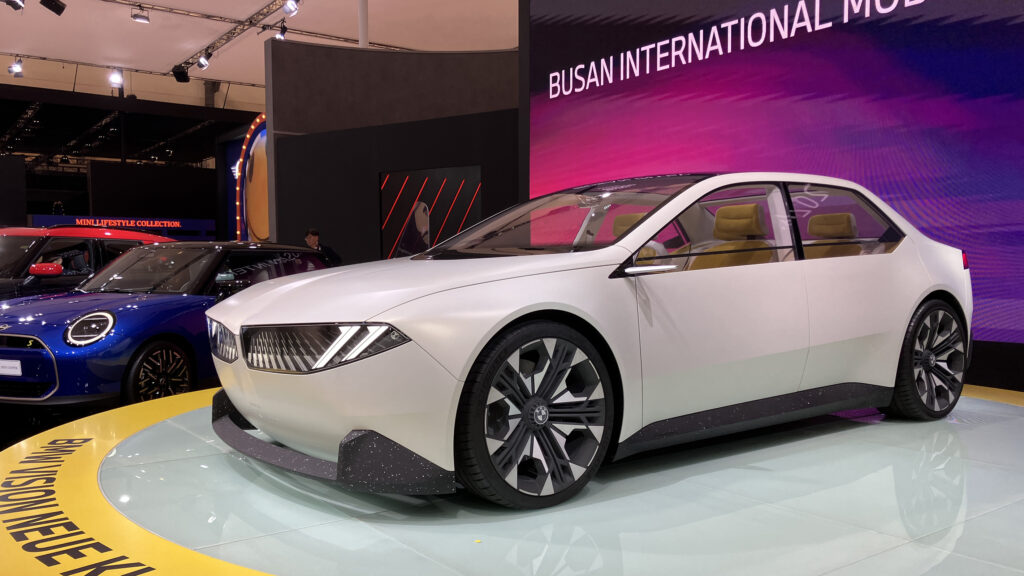
First time we were able to enjoy a proper look around this concept, which will serve as the basis for an entire family of future BMW EVs.
Many believe BMW is currently in a bit of a design crisis (even if increasing global sales suggest otherwise), but in the metal the Neue Klasse is a welcome stylistic return to form. It’s a gorgeous little thing.
It’s a compact coupe – roughly 3-Series size – successfully blending modern and retro, and a production version is due in late 2025 or early 2026.
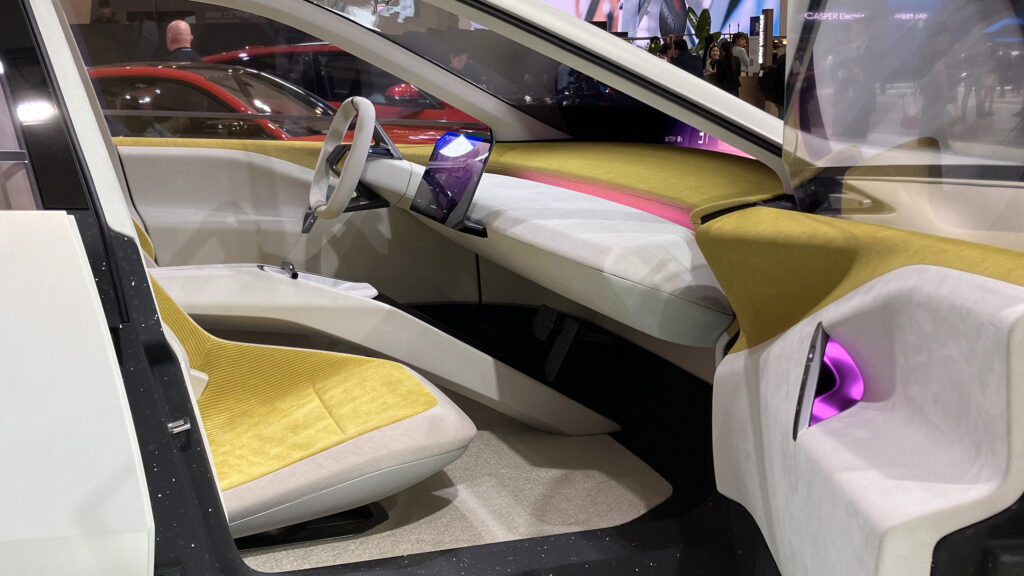
The interior’s rather minimalist, and we’re unconvinced blending mustard yellow trim with purple and pink ambient lighting will catch on.
Facelifted Kia EV6

Our first look at the refreshed EV6 with its new C-shaped ultra-slim front lights, plus revised rear lights to ape the EV9 and EV5 SUVs.
Initial impressions are it’s a bit fussier in design than the cleaner current EV6 wagon/SUV EV, but appears chunkier and tougher from the front.
A new 84kWh battery replaces the current 77.4kWh effort, which will improve range from the already decent 504km WLTP. Fingers crossed the GT version will steal the 478kW dual-motor setup and some of the driver involving goodies from sister brand Hyundai’s Ioniq 5 N.
Expect this revised EV6 to land in Australia late this year.
Renault Grand Koleos E-Tech
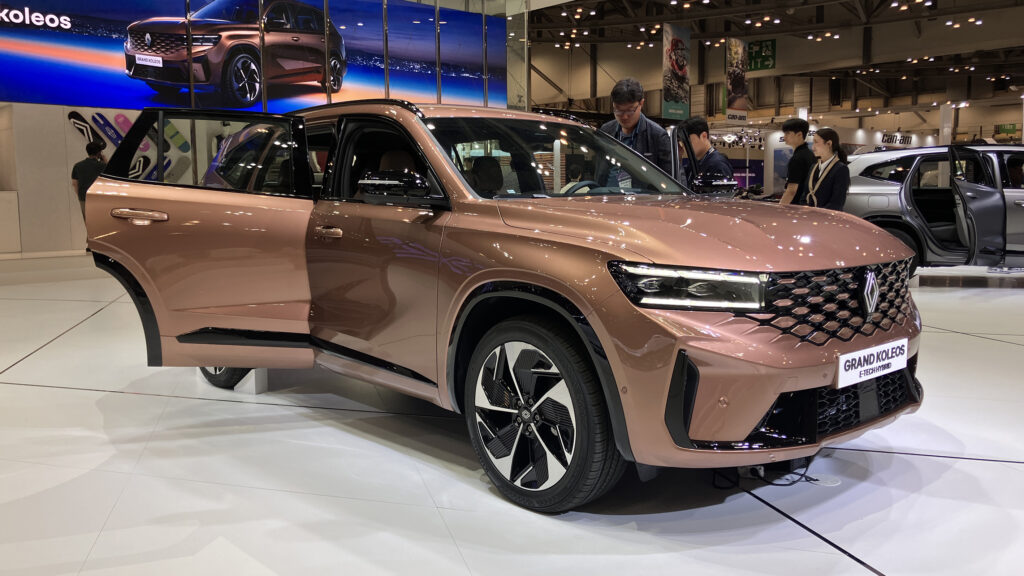
Just a hybrid, but an interesting one as it’s one of the best-looking Renaults in years.
It’s based on Geely’s Chinese Xingyue L SUV, so has no direct relationship to the smaller Nissan X-Trail based Koleos on the Aussie market. The Grand Koleos is only for South Korean for now, and there’s no word of a right-hand drive version.
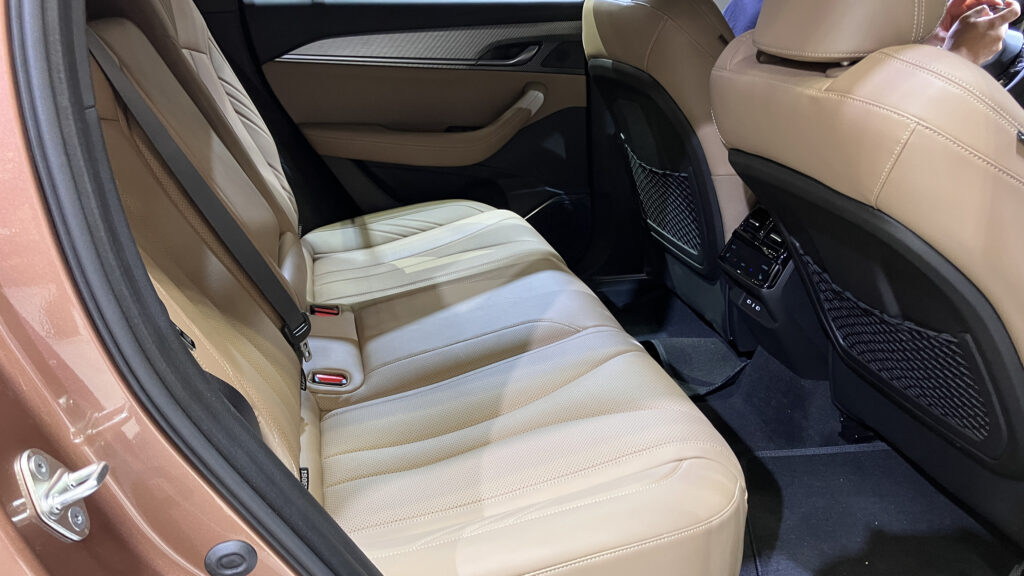
It’s an imposing thing, roughly Kia Sorento in size, but with only five seats. The interior has gone big on luxe with a twin screen dash and the option for a third in front of the passenger.
Seats are ventilated and very padded leather, there’s 10-speaker Bose audio, plus excellent rear head and leg room and a whopping boot. When did you get all fancy, Renault?
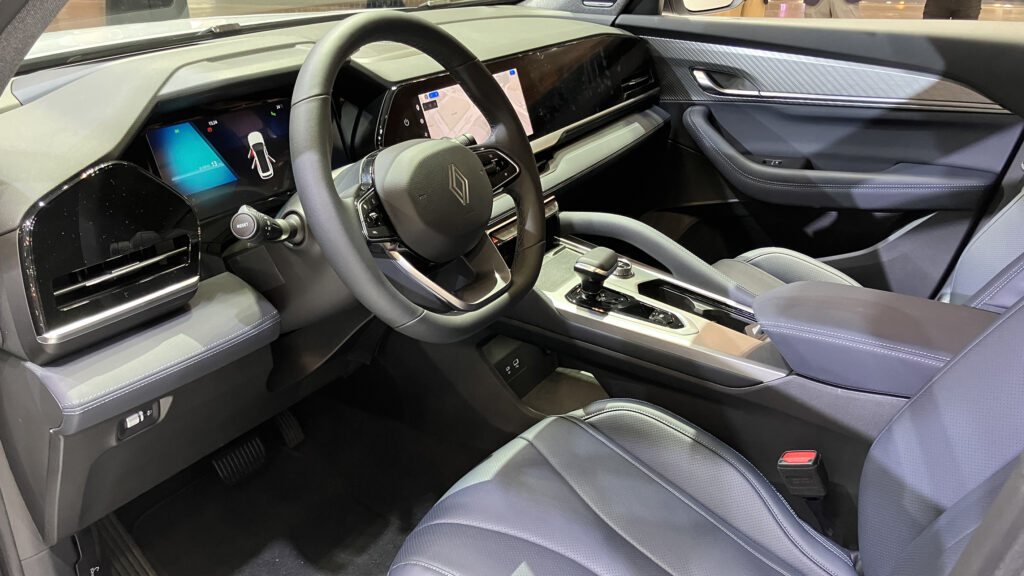
The E-Tech bit is a 1.5-litre turbo-petrol engine allied with two electric motors, delivering 180kW in total.
Kia PV vans

Coolest display was won by Kia and its concept electric PV van collective.
Kia Australia has previously shown interest in bringing production versions of these into the country when they’re fully formed, and their modular nature looks superbly versatile.
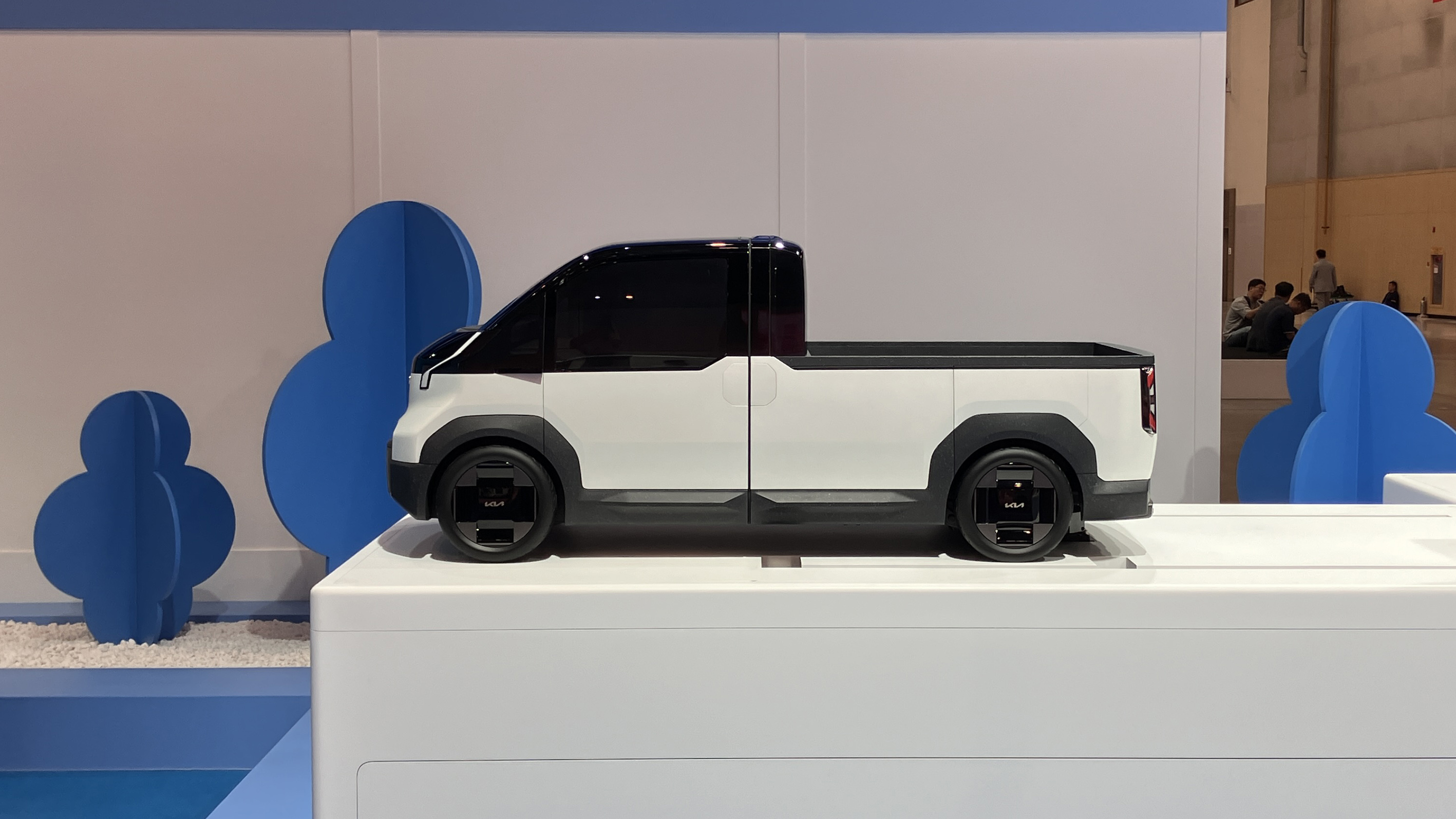
Most compelling is the PV5 medium van, which was shown as a people mover, camper, commercial carrier for the likes of deliveries, then the whole back end could come off and be replaced with a ute tray.
A larger PV7 brings even greater space – the cabin itself appears comically vast – while a kei-car-sized PV1 looks ideal for urban deliveries or the local postie route.

The potential as robo taxis and autonomous delivery vehicles is obvious, and interestingly, each looks about production ready.
Hyundai N 74 Vision concept
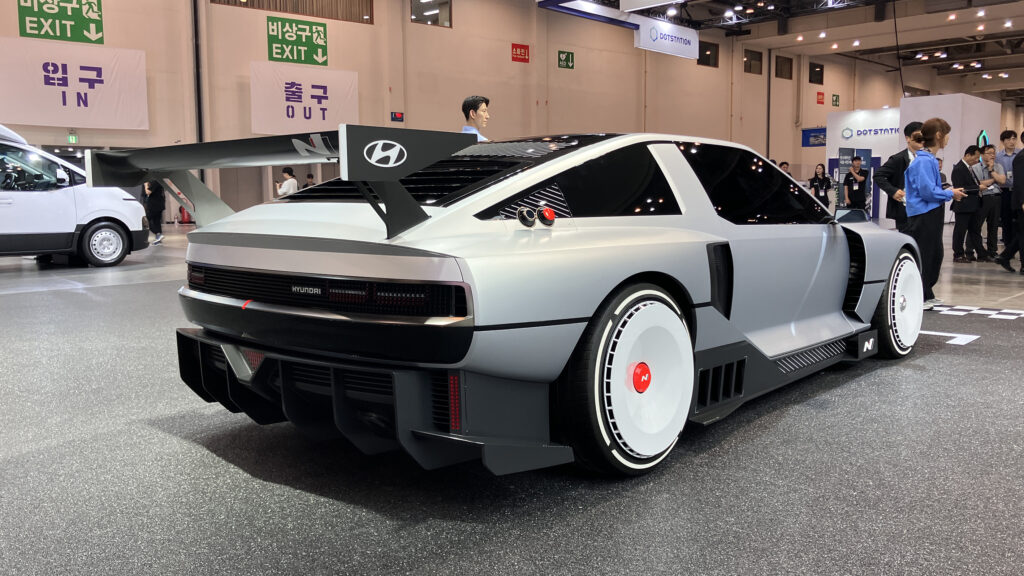
A reminder about how Hyundai is acing the retro wins.
The N Vision 74 has done the world circuit more times than the Rolling Stones, but latest rumour is there will actually be a production version of this hydrogen-powered delight.
Even if it’s only 100 units a year, let’s get these 578kW drifty weapons on our roads soon.

